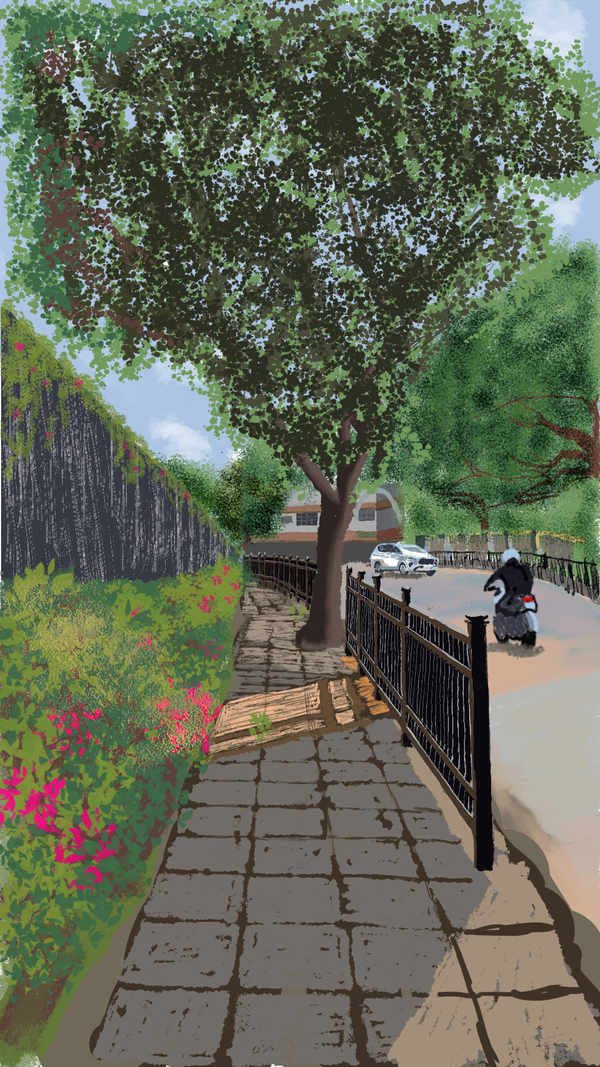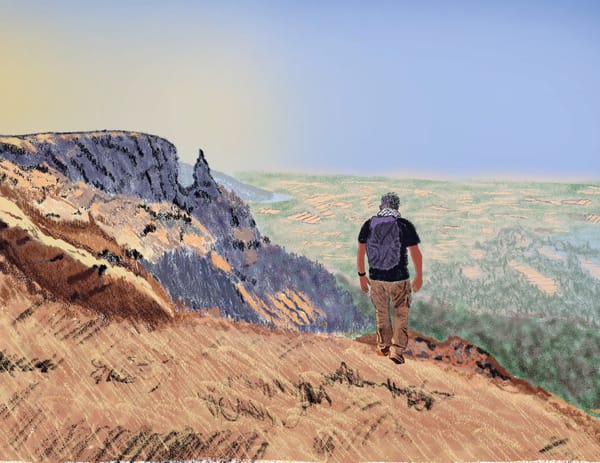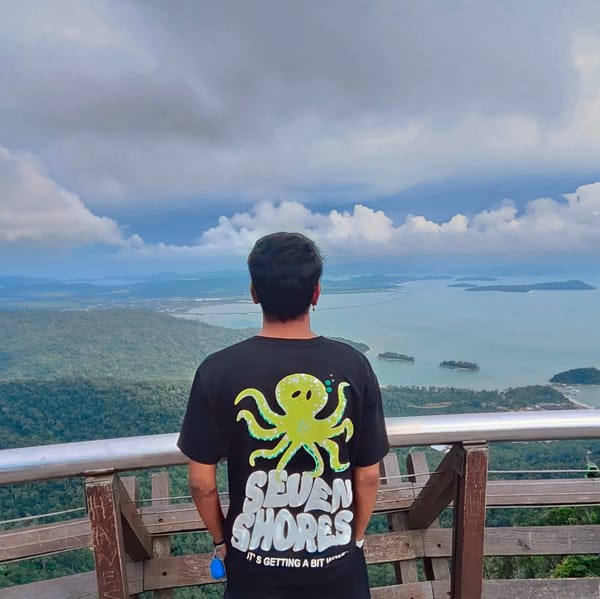Cycling from Greenwich along the Thames to Trafalgar Square
While on a business visit to London accompanied by my trusty Brompton folding bicycle, I spent the weekend cycling from Greenwich Park down to the Thames and then followed the river to end up at Trafalgar Square. Had a great time!
After I completed my business workshop in north London, I shifted closer to the city and went on another cycling trip. However, my first stop was at Compton Cycles to replace my Brompton stock seat with the stylish and famous Brooks saddle.
With my upgraded bicycle, I enjoyed a hot coffee and granola bar at a Costa Coffee outlet and then headed towards Greenwich park.
This is a Google Earth image (with additional labels) that is the view from Greenwich Park looking down towards the Thames. The route I planned was as follows:
- Cycle to Greenwich park,
- See the Royal Observatory,
- Then climb down the hill to Queen's House
- Visit Cutty Sark
- Cross the river using the foot tunnel
- Cycle to Canary Wharf;
- Ride along the north bank till Tower Bridge,
- Cross over to the south bank and ride up to the London Eye
- Cross back to the north and go to Trafalgar Square
At the southern end of Greenwich Park is the All Saint's Blackheath, one of the five Church of England parish churches serving Blackheath. The green grass was just too tempting and I parked the Brompton and enjoyed the cool morning breeze and warm sun.
The Royal Observatory was still closed when I reached. But I stole a picture through the gates. The shiny line in the foreground just behind the barricade is the Prime Meridian (Longitude 0) where the east hemisphere and west hemisphere of the earth meet. Later in the day, there will be scores of people lined up here to get a photograph of themselves straddling the line!
Just outside the gate are the Shepherd Gate Clock and the Public Standards of Length underneath it. The clock, an early example of an electric clock, was a slave mechanism controlled by electric pulses transmitted by a master clock inside the main building. The network of master and slave clocks was constructed and installed by Charles Shepherd in 1852. The clock by the gate was probably the first to display Greenwich Mean Time to the public and is unusual in using the 24-hour analog dial.
Next to the Observatory is a path that leads down the hill. The view from here provides a wide vista (compare with the Google Earth image above). The white monument just below the hill is the Queen's House, my next destination.
I entered the large complex consisting of the National Maritime Museum. In the lawns outside the Museum was an installation of paper boats to mark the anniversary of the 1940 Dunkirk evacuation.
The Dunkirk Evacuation, also known as the Dunkirk Miracle, is one of the most dramatic events of the Second World War. In the face of the overwhelming German advance, between 26 May and 4 June 1940, 366,162 Allied soldiers were evacuated from Dunkirk. Some 800 boats had been involved in the gigantic rescue operation, not just naval destroyers and other large vessels, but also hundreds of the now so-called "little ships of Dunkirk", which had risen to the occasion, ranging from pleasure and fishing crafts to merchant vessels (ref)
In the center of the museum facing south is the Queen's House with two pillared corridors on either side. The monument is a former royal residence built between 1616 and 1635 and was commissioned by Anne of Denmark, the queen of King James I.(ref)
Today the building is both a Grade I listed building and a scheduled ancient monument. It forms part of the National Maritime Museum and is used to display parts of their substantial collection of maritime paintings and portraits.(ref)
From the Queen's House is an 115-foot-wide (35 m), axial Vista that leads to the River Thames. This photograph is looking back at the Queen's House in the center. On either side is the National Maritime Museum.
A few meters to the west of the National Maritime Museum is Cutty Sark, the world’s only surviving tea clipper, and fastest ship of her time. Built in Scotland in 1869, Cutty Sark was designed to carry tea from China to England as fast as possible. The record-breaking ship traveled the globe and visited every major world port.(ref)
Just beside the Cutty Sark is the entrance to the unique Greenwich Foot Tunnel that crosses beneath the River Thames, linking Greenwich on the south bank with the Isle of Dogs in the north.
A short ride further north along the river leads to Canary Wharf. From 1802 to 1939, the area was one of the busiest docks in the world. After the 1960s, the port industry began to decline, leading to all the docks being closed by 1980. Today it is a major business district and one of the United Kingdom's two main financial centers. It contains many of Europe's tallest buildings, including the second-tallest in the UK, One Canada Square.
Spread all over the Canary Wharf area is a series of sculptures. The one in this picture is called "Two men on a bench", a bronze sculpture by Giles Penny.(ref)
At the north dock, I bought a tasty Indian lunch consisting of Kati Rolls and enjoyed it sitting on a bench while staring at the water. My neighbor was equally quiet and enjoying his lunch when I came behind to click this photograph of the bike and the bench.
From Canary Wharf, I cycled along the north bank to Saint Katherine Docks that is just east of the Tower of London and the Tower Bridge. They were part of the Port of London, in the area now known as the Docklands, and are now a popular housing and leisure complex (ref)
A short ride further west is the Tower of London, officially called as "Her Majesty's Royal Palace and Fortress of the Tower of London". It was founded towards the end of 1066 as part of the Norman Conquest of England. The White Tower, which gives the entire castle its name, was built by William the Conqueror in 1078 and was a resented symbol of oppression, inflicted upon London by the new ruling elite.(ref)
At the western end of the Tower of London is a quaint church called "All Hallows-by-the-Tower", an ancient Anglican church. Founded by the Abbey of Barking in 675 AD, 300 years before the Tower of London, it is the oldest church in the City of London. In the crypt beneath is a second-century Roman pavement, discovered in 1926, evidence of city life on this site for nearly two thousand years.(ref)
I then crossed to the south bank over the Tower Bridge. Built between 1886 and 1894, the bridge consists of two bridge towers tied together at the upper level by two horizontal walkways, designed to withstand the horizontal tension forces exerted by the suspended sections of the bridge on the landward sides of the towers.
The center section is actually a drawbridge and can be opened for tall ships to pass through. This is a picture taken of the tall ship Wylde Swan passing under Tower Bridge decorated for the London Olympics in August 2012 (photo credit)
The above Google Earth image capture is looking south west from Saint Katherine Docks. The Tower of London is on the nearer bank of the Thames, with All Hallows-by-the-Tower on the right, and the Tower Bridge to the left.
As I rode along the south bank westward to London Bridge, I stopped to take a look at the famous conical building - The Shard. This is a 95-storey skyscraper and is the tallest building in the United Kingdom, the fourth-tallest building in Europe and the 111th-tallest building in the world. The glass-clad pyramidal tower has 72 habitable floors, with a viewing gallery and open-air observation deck on the 72nd floor, at a height of 244.3 meters (802 ft).(ref)
Further west after passing the Southwark bridge, I reached Shakespeare's Globe. This is a reconstruction of the Globe Theatre, an Elizabethan playhouse associated with William Shakespeare. The original theater was built in 1599, destroyed by fire in 1613, rebuilt in 1614, and then demolished in 1644. The modern Globe Theatre reconstruction is an academic approximation based on available evidence of the 1599 and 1614 buildings.(ref)
A short distance ahead is the Tate Modern, Britain's national gallery of international modern art. Tate Modern is one of the largest museums of modern and contemporary art in the world. It holds the national collection of British art from 1900 to the present day and international modern and contemporary art.(ref)
Next to Tate Modern is the Millenium Bridge, officially known as the London Millennium Footbridge, a steel suspension bridge for pedestrian crossing. Across the river is the magnificent dome of St. Paul's Cathedral.
Further west from the Millenium bridge is the Blackfriars Bridge. By the time I reached here, the sky had turned cloudy and I expected it to rain, but luckily it did not.
At the next Waterloo Bridge is the Southbank Center. The undercroft of the Southbank Centre has pretty much been the beating heart of London skateboarding for around 40+ years now. With a love hate relationship between the building's owners and skateboarders (brilliantly documented in the documentary "Rollin Through The Decades" by Winstan Whitter). The area set aside for skateboarders comprises of a variety of ledges, banks and a set of stairs. There is also a railing to stop tourists from wandering a bit too close and getting in the way.(ref)
A little further south along the bank is the famous London Eye - a giant Ferris wheel. As of mid-January 2015, it has been known as the Coca-Cola London Eye. The structure is 443 feet (135 m) tall and the wheel has a diameter of 394 feet (120 m). When erected in 1999 it was the world's tallest Ferris wheel.(ref)
The next bridge south of the London Eye is the Westminster Bridge across which one can see the famous Palace of Westminster and its iconic bell tower - Big Ben (officially known as Elizabeth Tower).(ref)
Crossing over the Westminster bridge, I went to Trafalgar Square - a public square in the City of Westminster built around the area formerly known as Charing Cross. Its name commemorates the Battle of Trafalgar, a British naval victory in the Napoleonic Wars with France and Spain that took place on 21 October 1805 off the coast of Cape Trafalgar, Spain.(ref)
After having a light snack for dinner, I then took the subway back with trusty Brompton neatly folded on one side. I was surprised at finding it empty - but that state did not last long and by the next stop it was fully occupied.



